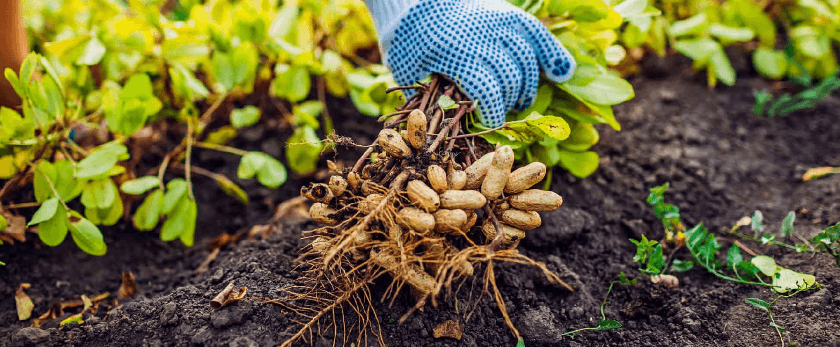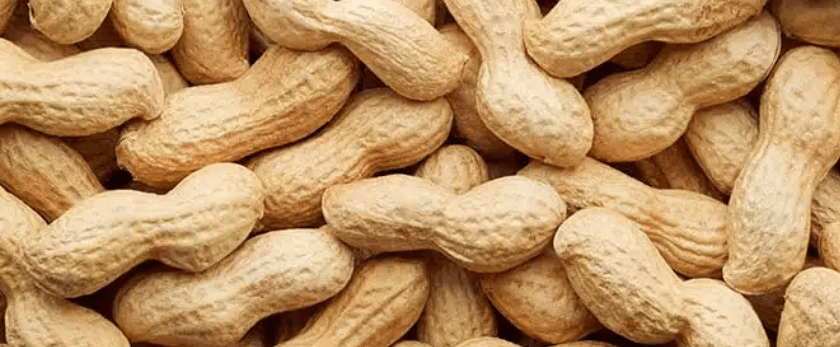Peanuts are a delicious and nutritious snack that can be enjoyed in many different ways. But did you know that you can also grow your own peanuts at home? Not only is it a fun and rewarding experience, but it also helps reduce your carbon footprint by reducing the need for transportation and packaging. In this article, we will guide you through the process of growing your own peanuts, from planting to harvesting, and provide tips on how to care for them along the way.
What You Will Need
Before we dive into the steps of growing peanuts, let's first gather all the necessary materials. Here's what you will need:
- Peanut seeds (also known as "peanuts in the shell")
- A large pot or container with drainage holes
- High-quality potting soil
- Watering can or hose
- Fertilizer (preferably organic)
- Pruning shears
- A sunny spot in your garden or balcony
How to Care for Your Peanuts
Watering
Peanuts require consistent moisture to grow, but they don't like to be waterlogged. The key is to keep the soil moist but not soggy. Water your peanuts deeply once or twice a week, depending on the weather and soil conditions. If you live in a hot and dry climate, you may need to water more frequently. Make sure to water the soil directly and avoid getting the leaves wet, as this can lead to fungal diseases.
Light
Peanuts need full sun to thrive, so make sure to place your pot in a spot that receives at least 6-8 hours of sunlight per day. If you're growing peanuts indoors, place them near a sunny window or use grow lights to provide enough light.
Soil
Peanuts prefer well-draining, sandy soil with a pH level between 5.5 and 6.5. If your soil is too heavy or clay-like, mix in some sand or perlite to improve drainage. You can also add some compost or organic matter to enrich the soil and provide nutrients for your peanuts.
Fertilizer
Peanuts are heavy feeders and require regular fertilization to produce a good harvest. Use a balanced organic fertilizer once a month, following the instructions on the package. Avoid using chemical fertilizers, as they can harm beneficial soil organisms and pollute the environment.
Pruning
Peanuts don't require much pruning, but it's essential to remove any dead or damaged leaves to prevent diseases. You can also pinch off the tips of the plant when it reaches about 6 inches in height to encourage bushier growth.
What is the Best Time to Grow Peanuts?
Peanuts are a warm-weather crop and require a long growing season of 120-150 days. The best time to plant peanuts is in late spring or early summer when the soil has warmed up to at least 65°F (18°C). If you live in a colder climate, you can start your peanuts indoors and transplant them outside once the weather warms up.

Common Problems with Growing Peanuts
Like any plant, peanuts can face some challenges during their growth. Here are some common problems and how to address them:
- Pests: The most common pests that can attack peanuts are aphids, cutworms, and wireworms. You can use organic pest control methods such as neem oil or insecticidal soap to get rid of them.
- Diseases: Peanuts can be susceptible to fungal diseases such as leaf spot and root rot. To prevent these diseases, make sure to water the soil directly and avoid getting the leaves wet. You can also use organic fungicides if needed.
- Nutrient deficiencies: If your peanuts are showing signs of yellowing leaves or stunted growth, it could be a sign of nutrient deficiency. Make sure to fertilize regularly and use a balanced organic fertilizer to provide all the necessary nutrients.
Harvesting Your Peanuts
Peanuts are ready to harvest when the leaves start to turn yellow and the plants begin to wilt. Carefully dig up the plants, being careful not to damage the pods. Shake off any excess soil and lay the plants in a warm, dry place to cure for 2-3 weeks. Once the pods are dry, remove them from the plants and store them in a cool, dry place.
Responsible Disposal Methods
After harvesting your peanuts, it's essential to dispose of any leftover plant material responsibly. You can compost the leaves and stems, or use them as mulch in your garden. If you have any leftover peanut shells, you can also compost them or use them as mulch. Avoid throwing them in the trash, as they will end up in a landfill and contribute to greenhouse gas emissions.
In Conclusion
Growing your own peanuts is a fun and rewarding experience that not only provides you with a delicious snack but also helps reduce your carbon footprint. By following these simple steps and caring for your peanuts, you can enjoy a bountiful harvest and contribute to a more sustainable future. So why not give it a try and start growing your own peanuts today? Your taste buds and the planet will thank you.










